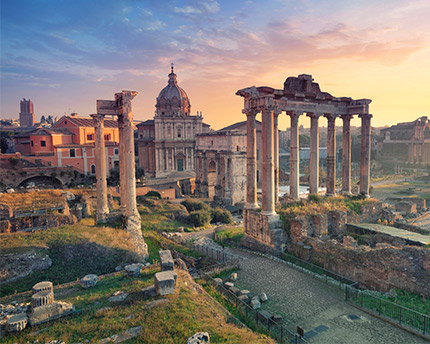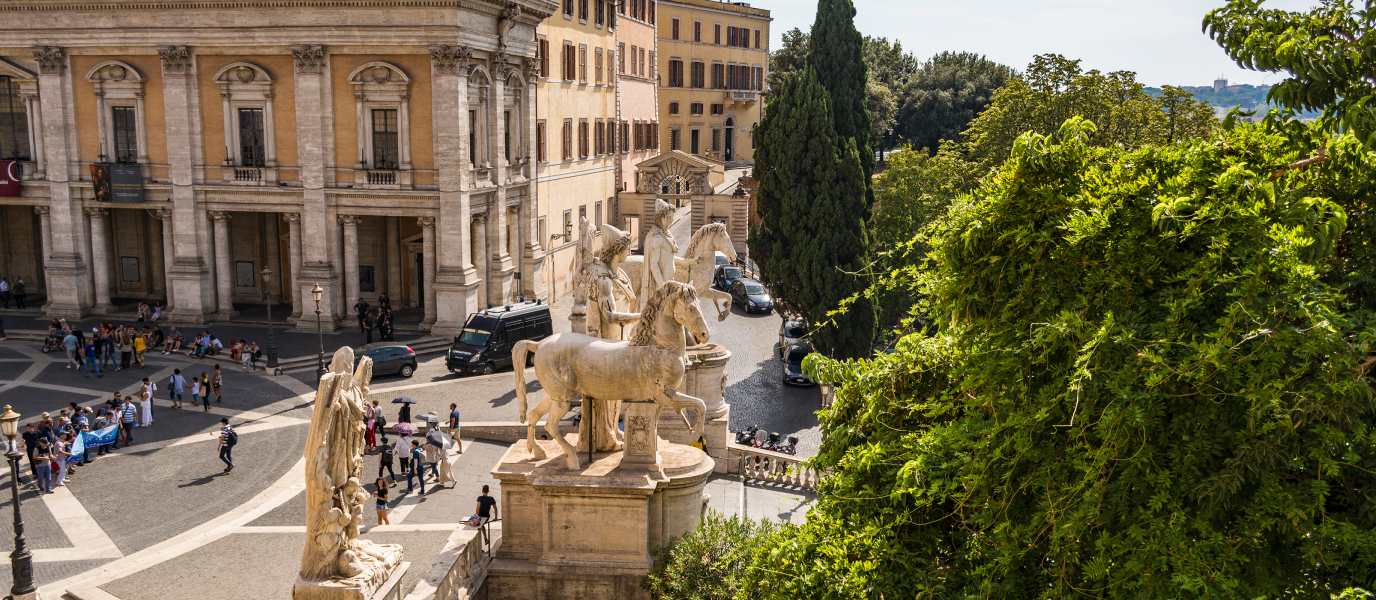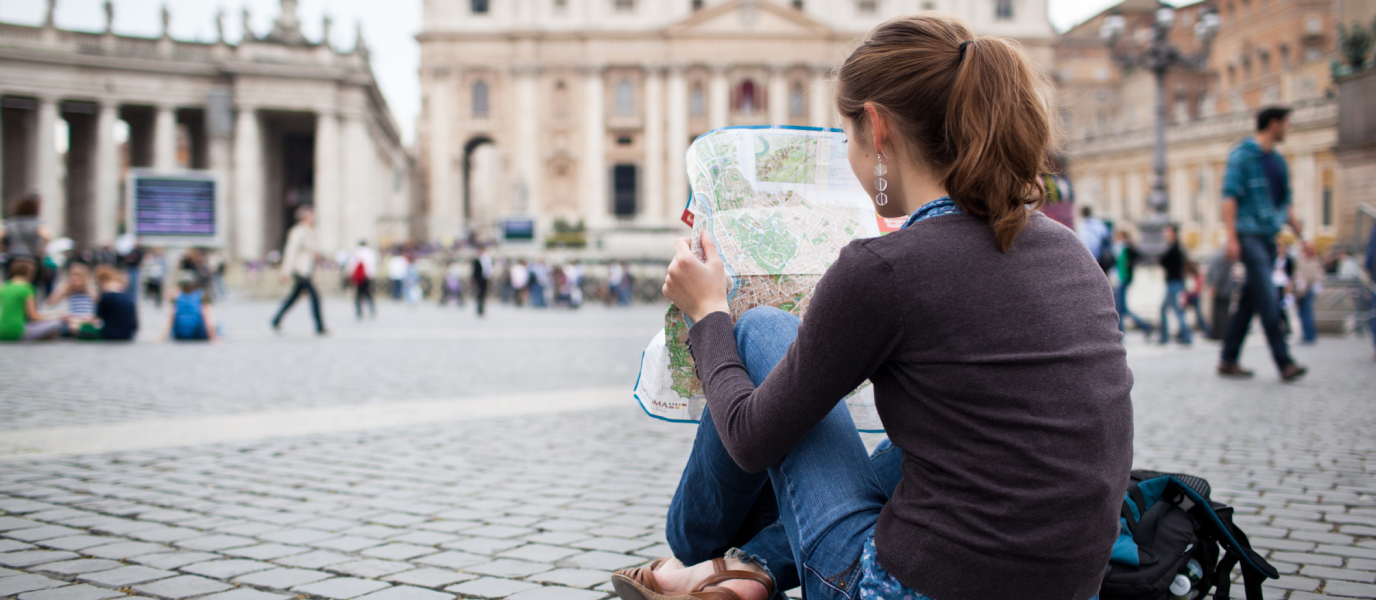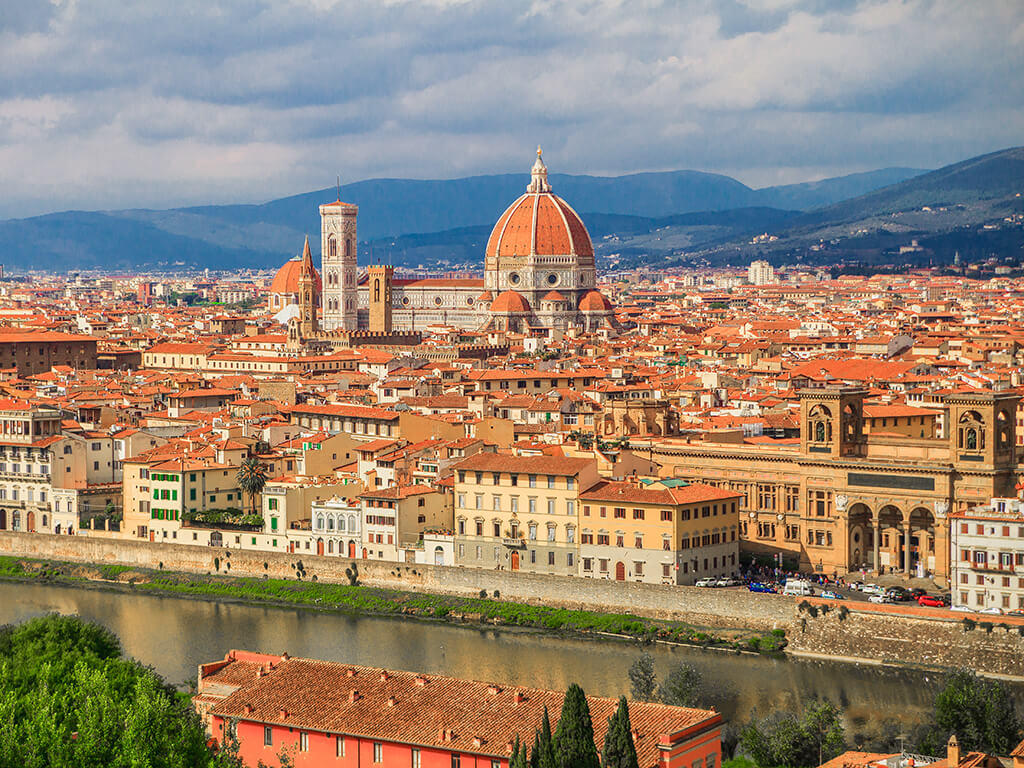The iconic dome of the Papal Basilica of St. Peter (or St. Peter’s Basilica) dominates the skyline in Rome. The sheer size of it makes it look as though it was created for giants. For many millions of people, it is a place of pilgrimage and of huge spiritual importance. It is over 180 metres long and the largest Catholic Church in the world. Located in the Vatican City, it is one of the four largest basilicas in Rome and the main pontifical church. It is also where most of the important ceremonies are held.
However, St. Peter’s basilica is first and foremost a building that showcases different art forms in all their glory. It is as majestic as the geniuses themselves who created it. Find out all you need to know about this magnificent building – a must-see on your trip to the Vatican.
How St. Peter’s Basilica was built
According to Catholic tradition, St. Peter was a martyr who requested he be crucified upside down because he was unworthy of being crucified like Christ. His remains were buried outside the Circus of Nero where he died. A red rock was placed next to the tomb so that people could identify it. A sanctuary was built there and, 300 years later, it became the old Basilica of St. Peter.
Construction of the church was commissioned by Emperor Constantine around the year 326 and it was used for the coronation of Charlemagne. However, by the 15th century, the building was fast falling into ruin. Rossellino and Alberti began the restoration work but were told to stop when they just three years into the project.
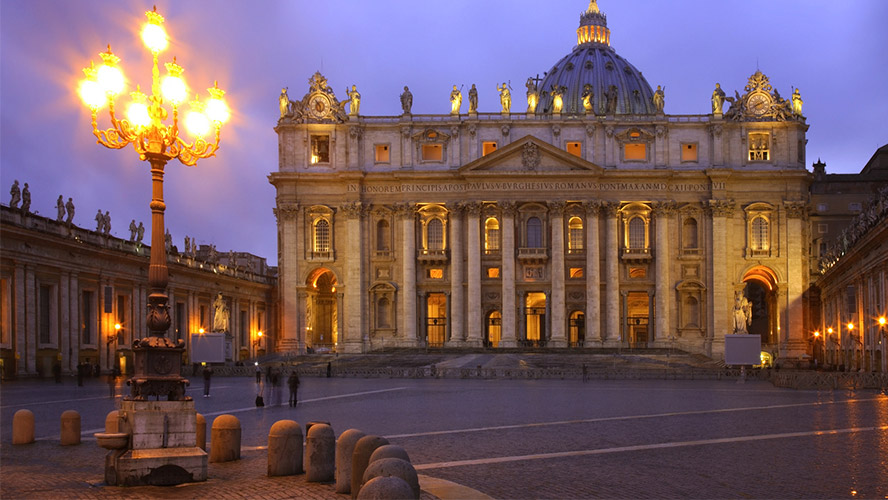
Pope Julius II, one of the great patrons of the Renaissance era, rekindled the restoration idea and Bramante won the commission. He designed a completely new basilica and the project was so incredibly huge that it seemed like an impossible feat. The original church was demolished in 1506 and Bramante’s plan was put into place. The floor would be shaped like a Greek cross enclosed within a square and topped with five domes with the largest one at the centre, a direct reference to the Pantheon. Filarete and Leonardo da Vinci’s studios played crucial roles in the design work.
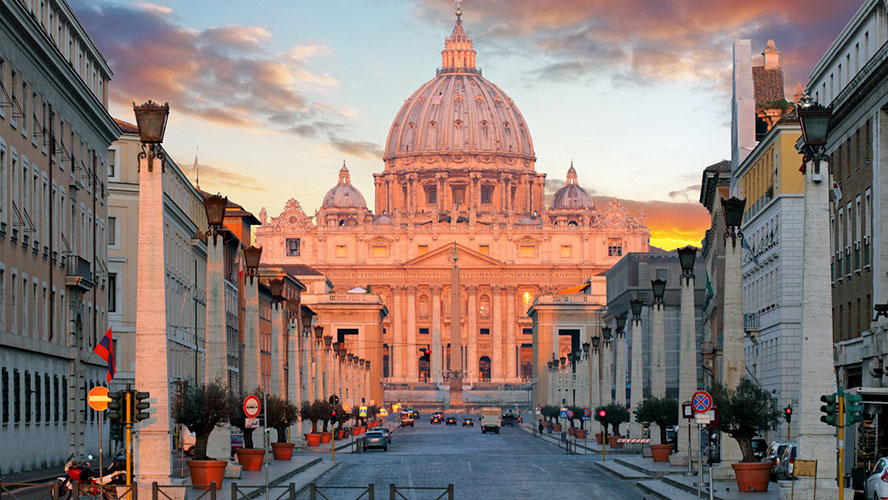
Bramante died in 1514 when his project had only just begun taking shape. Responsibility for the construction work was handed over to Raphael. Along with Antonio da Sangallo the Younger, he changed the plans to shape the basilica like a Latin cross with three naves. When Raphael died, Antonio da Sangallo took over project management until 1546 when Michelangelo came on the scene. Michelangelo went back to Bramante’s original idea and corrected its structural issues. Thanks to Michelangelo, the grand dome was at last a reality. It was erected right above the main altar where St. Peter’s tomb lies.
Whilst the basilica would not be completed until twenty-four years after Michelangelo’s death, Domenico Fontana and Giacomo della Porta followed his plans down to the very last detail. Architect Carlo Maderno completed the building and gave it its grand classic façade between enormous columns and, eventually in 1626, a floor in the shape of a Latin cross.
The first thing that strikes you when you approach St. Peter’s Basilica is the square designed by Bernini in 1629. Oval-shaped, it is bounded by a colonnade with over 280 Doric columns that invites visitors to enter. But if you’re impressed by the outside, you’ll be amazed by the inside.
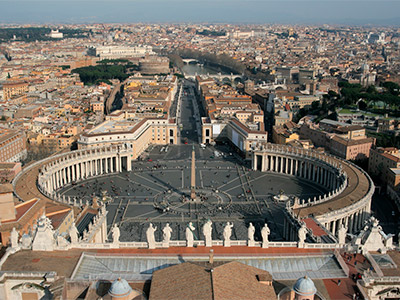
Inside St. Peter’s Basilica
It took over a century to build the most significant church in the world, so the interior simply had to impress. There are five doors:
- The Door of Death, which is used exclusively by the popes’ funeral cortèges.
- The Door of Good and Evil.
- The Central Door made from bronze by sculptor Florentino.
- The Door of Sacraments.
- The Holy Door, which is only opened by the Pope in holy years.
The interior is like a museum and houses some of the most well-known works of art of all time. They all form part of the complex interior design. The basilica has three naves. The middle one is the largest and it has a barrel vault ceiling. The pillars holding it up have niches that contain sculptures of the founder saints – 39 in all.
Sculptures in St. Peter’s Basilica
In the central nave, you can see a 13th-century bronze statue of St. Peter by Arnolfo di Cambio. It is one of the most iconic features of the basilica so expect a queue.
In each of the different chapels, there are funeral monuments and sculptures by world-renowned artists. Don’t miss the right-hand nave where you can see the ‘The Pity’ sculpted from marble by Michelangelo between 1498 and 1499. It is one of his most exceptional pieces of work. Make sure you take time to contemplate the serenity and tenderness of the Virgin Mary in stark contrast with the dead body of Christ in her arms.
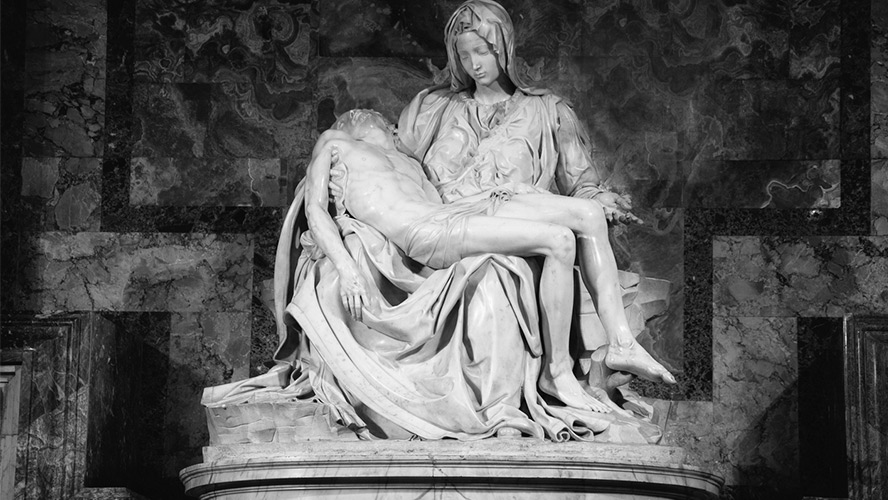
Bernini also played a huge role in the creation of the basilica. He was responsible for the magnificent Tomb of Pope Alexander VII located in the ambulatory; the Chair of St. Peter, a relic that contains what is believed to be the wooden throne used by St. Peter; the statue of St. Longinus, inside one of the pillars holding up the dome; and the marvellous baldachin of St. Peter positioned right at the centre of the crossing under the dome. The baldachin is made of bronze and it is one of the most recognisable symbols of all. It is held up by four Solomonic columns that beautifully frame the Papal altar.
The dome at St. Peter’s Basilica
A huge dome crowns the entire building and, despite its size, it appears to float in the air. It is over 135 metres high and covered in mosaics – ensuring your eyes are constantly drawn upwards. If you decide to go up into the dome, you will be rewarded with unbeatable views of St. Peter’s Square.
St. Peter’s Basilica is a journey in itself; an amazing journey through art. Don’t forget to visit the square at night when it is quiet and this amazing and singular piece of architecture is lit up.






























































